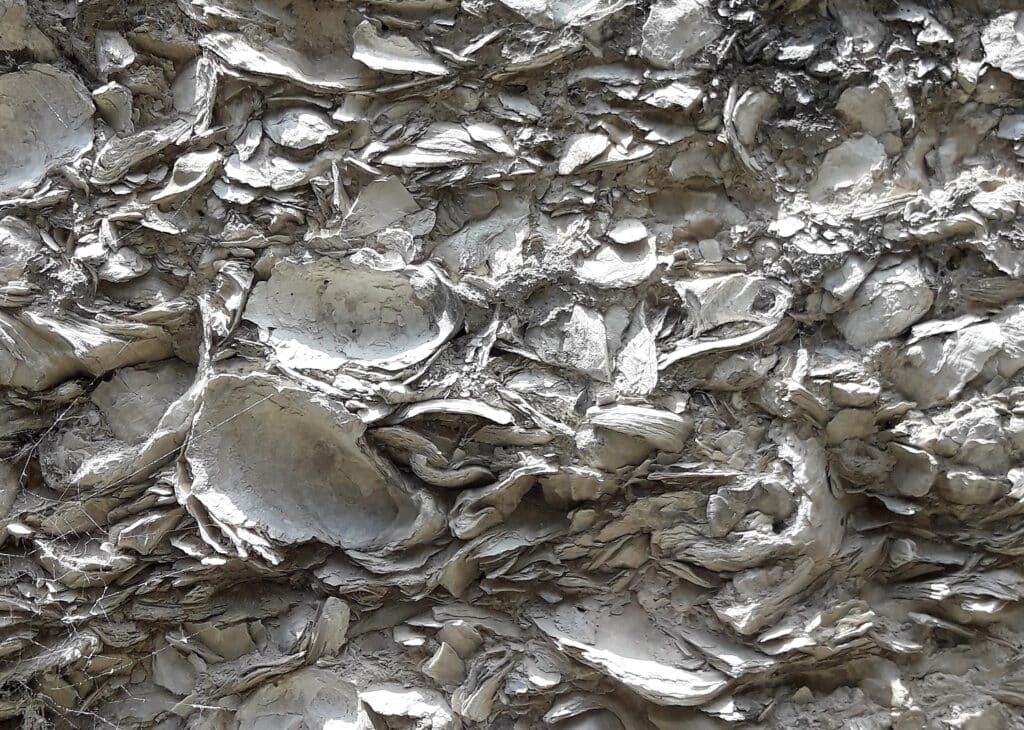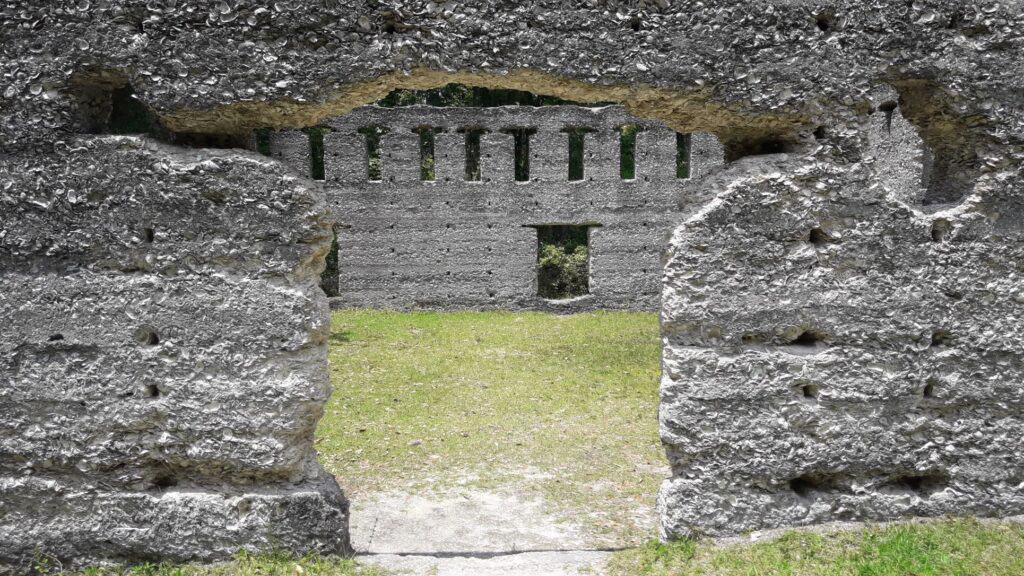Tabby: A Purrfect Building Material
Did you know the tabby cat’s distinctive coat first appeared in the Medieval Era in Southwest Asia?
You can use that tidbit for you next trivia night, but that is not the tabby I will discuss today. Instead, I wish to tell you about the building material called tabby, which you may find all find throughout the Southeastern United States.
So what is tabby exactly? It is a type of concrete made of equal parts water, sand, oyster shells, ash, and lime (created from burning oyster shells). It is poured into molds to make many shapes but mostly walls, which would have been covered with stucco as a protective layer.

Tabby has been used in the coastal Southeast from the late 1500s to the 1850s, although there is debate whether this building practice began in North Africa in the 13th and 14th centuries and was taken to Spain or vice versa. The origin of the word tabby itself is debated, too; the Spanish word tapia means mud wall, while the Arabic word tabbi means a mixture of mortar and lime. It is clear, though, that the Spanish brought the concept of tabby to the New World and used it extensively in Florida as early as 1580.
The British who besieged Spanish-held St. Augustine in 1702 noted the tabby buildings there and constructed their own in South Carolina. General James Oglethorpe saw these military structures in South Carolina and began advocating for the use of tabby in Georgia, specifically Fort Frederica on St. Simons Island. He even built himself a one-and-a-half story tabby house there called Orange Hall, but it was destroyed in the Revolutionary War. Today you may find remnants of tabby buildings throughout the South, from North Carolina to Texas.
What were the advantages of tabby for the Southeast specifically? First, it could be made of local materials, including discarded shells from Native American middens, or trash heaps (which the Europeans scavenged extensively). This meant nothing needed to be imported, which cut down on expenses. Another advantage was that no skilled craftsmen, such as carpenters or masons, were necessary to manufacture or build it. Furthermore, tabby is much more durable than wood, which deteriorates rapidly in the humid Southeastern climate. Tabby can be reused, as well. For instance, much of the tabby of Fort Frederica was carted way to construct, among other things, the foundations of the St. Simon’s lighthouse of 1872.
The use of tabby declined in the mid-1800s for several reasons: the end of slavery, which was the main cheap source of manpower for its labor-intensive construction; the depletion of materials (those middens couldn’t last forever!); and the real death knell of tabby, the introduction of Portland cement to the U.S. from England by 1870. However, tabby construction did see a rebirth at the end of the 19th century, but with a slight twist; when Jekyll Island, Georgia, was developed as a millionaire’s retreat in the 1880s, several mansions on the island were built of tabby mixed with Portland cement. Henry Flagler, too, built many such “Tabby Revival” buildings in St. Augustine in the 1880s, including the Ponce de Leon Hotel, the Alcazar Hotel, and the Memorial Presbyterian Church.
Even though the use of traditional tabby basically disappeared after 1930, you can still find recent tabby constructions in Georgia, such as the 1988 public library in Kingsland. But as with this structure, most new “tabby” buildings are really “pseudo-tabby,” which is Portland cement with crushed shells applied to the surface.
I hope you now have a whole new appreciation for what “tabby” means down South! If you want to go on your own tabby treasure hunt, you may find many remains of true tabby buildings in Georgia. Visit the McIntosh Sugar Mill in St. Marys, Wormsloe Plantation outside Savannah, or the Horton House on Jekyll Island to see (and touch) it first-hand!
Learn more about tabby on or Cumberland Island or St. Marys Walking Tour!




2 Comments
Jane · June 2, 2020 at 12:14 pm
I found this to be very informative! I know so little about our southern history.
Molly Verlin · June 2, 2020 at 12:22 pm
Thanks, Jane! Glad I can help!
Comments are closed.